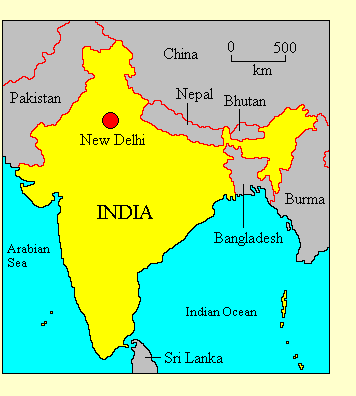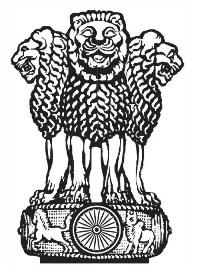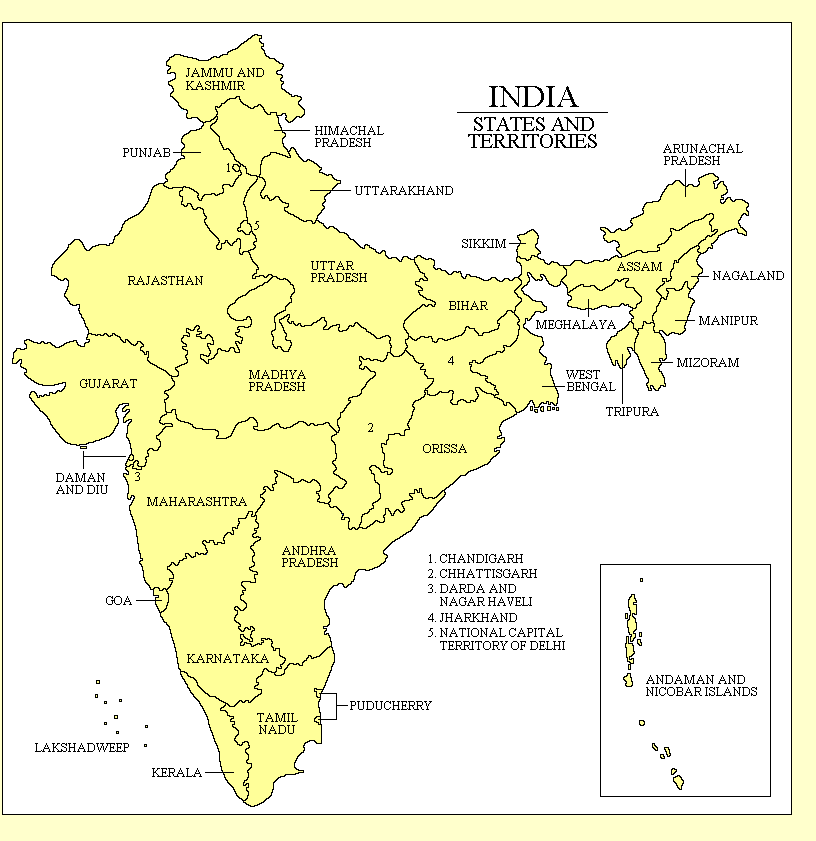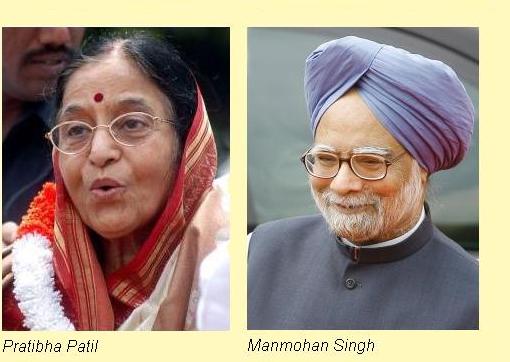

REPUBLIC OF INDIA
• Official name: Bharat Ganarajya (Republic of India)
• Location: South Asia
• International organisations: Commonwealth of Nations, Group of Twenty, Non-Aligned Movement, United Nations, World Trade
Organisation
• Borders: Bangladesh, Bhutan, Burma, China, Nepal, Pakistan
• Coastline: Arabian Sea, Bay of Bengal
• Land area: 3,287,590 km2
• Population: 1,198,000,000
• Annual GDP (PPP) per capita: US$3,100 (2009 CIA estimate). World ranking: 134
• Ethnicity: North Indian (Indo-Aryan) 72%, Dravidian 25%, Mongoloid and other 3%
• Languages: Hindi (also called Hindustani and in a variant form Urdu) is spoken by about 30% as a first language,
understood by about 50%. Other languages include
Bengali (7.5%), Telugu (7.4%), Marathi (7.2%), Tamil (6.9%), Gujarati (4.2%),
Malayalam (3.8%), Kannada (3.8%), Oriya (3.4%) and many others. Hindi is the "National Language" but English is the
language of government and business.
• Religion: India is officially a secular state, although this commitment has been
under great strain in recent years. The large majority (81%) are Hindus. There are
minorities of Moslems (12.0%), Christians (2.3%), Sikhs, Buddhists, Jains and Parsis.
• Form of government: Semi-federal parliamentary democratic republic. India is divided into 28 states and seven
territories. The states have legislative independence but their legislatures can be dissolved by the central
government.

• Capital: New Delhi
• Constitution: The Constitution of India
came into effect 25 January 1950.
• Head of state: The President, elected for a five-year term by the members of the
national Parliament and all the state
legislatures. The President's functions are largely ceremonial.
Pratibha Patil, India's first female President,
took office on 25 July 2007.
• Head of government: The Prime Minister, appointed by the President. The
Prime Minister is always the leader of the party or coalition of parties in the lower house of Parliament,
and is accountable to it.
• Legislature: The Parliament of
India is a bicameral
legislature. It consists of the the House of the People (Lok Sabha), which has 545
members, elected
for five-year terms from single-member districts, and the Council of States (Rajya
Sabha),
which has 250 members elected by the state legislatures for six-year terms.
• Electoral authority: The Election Commission of
India conducts all
national and state elections.
• Freedom House 2011 rating: Political Rights 2, Civil Liberties 3
• Transparency International Corruption Index: 33% (87 of 178 countries rated)
• Reporters Without Borders Press Freedom 2010 Index: 61.2% (122 of 178 countries rated)
(I think this judgement is too harsh.)
• Heritage Foundation Economic Freedom 2010 Index: 54.6% (124 of 179 countries rated)
Political history
The various states of the Indian subcontinent were brought under British rule during
the 18th and 19th centuries. In 1858 a unified British administration of India was
established. The Indian National Congress was founded in 1885 to represent Indian
national aspirations. In response to this agitation, the first (appointed)
representative
bodies were established in 1909.
The Government of India Act 1919 created a bicameral
national legislature, with a lower house elected indirectly by provincial legislatures.
The Government of India Act 1935 gave more power to the legislatures, and enlarged the
electorate to about 15% of the population, entitled to vote on qualifications of
literacy and property.
Following independence in 1947, India became a republic and a parliamentary
system on the Westminster model
was enshrined in the Constitution of 1950. India became a semi-federal state, with weak
provincial legislatures and a strong central
government. The franchise was granted to all adults, men and women. Distinctions of
religion and caste were officially abolished, but in practise have remained influential
in Indian politics.
For thirty years after independence Indian politics were dominated by the
Indian National Congress, led by
Mohandas K Gandhi and Jawarharlal Nehru and committed to national development,
secularism and democratic socialism. Until the 1970s Congress was the only genuinely
national party. In 1975 Nehru's daughter and successor, Indira Gandhi, attempted to
impose an authoritarian regime, but was forced to call elections in 1977, in which
Congress was defeated for the first time.
Since the 1980s Congress has alternated in power with the Bharatiya
Janata Party (Indian People's Party or BJP), a party based on Indian nationalism,
Hindu supremacy and the dominance of the northern belt of Hindi-speaking states. The BJP
comfortably won the 1999 elections, but was surprisingly defeated in 2004 by a coalition of
parties led by Congress. Congress has retained its
base among Moslems and in the non-Hindi-speaking southern states, but has lost political
focus with the decline of socialist ideas, and has become a vehicle for the remaining
members of the Nehru-Gandhi family. The 2004 election, however, showed that Congress can
still mobilise its base among the rural poor.
The "third force" in Indian politics is the three Communist parties: the
Communist Party of India, the
Communist Party of India-Marxist and the
Communist Party of India (Marxist-Leninist). The
CPIM is the largest of these parties and governed West Bengal for many years until 2011, but
the Communist movement as a whole is in a stedy decline.

With the decline of national, secular politics has come the rise of
regionalist parties, mostly built around charasmatic local leaders. These include the
Telugu Desam in Andra Pradesh, the
Dravida Munnetra Kazhagam
(Dravida Progressive Federation) in Tamil Nadu, and many others.
Congress returned to power in 2004 under Prime Minister
Manmohan Singh, when the Congress President, Sonia
Gandhi (widow of the assassinated Rajiv Gandhi) declined to take the office. Aided by a booming economy, the
Congress government has proved more enduring and popular than any other in recent times, and in 2009 it was
re-elected with an increased majority, taking seats both from the BJP and from the communist parties. At some point
Singh is expected to hand over the prime ministership to Rahul Gandhi, now 39, son of Sonia and Rajiv, grandson of
Indira Gandi and great-grandson of Nehru.
Freedom House's 2011
report on India
says: "India is an electoral democracy... Under the supervision of the Election Commission of India (ECI), elections
in India have generally been free and fair. The 2009 national polls were mostly peaceful... Badly maintained voter lists
and the intimidation of voters in some areas continue to be matters of concern, although the ECI has made efforts to make
voter lists available online. A wide range of political parties operate freely... Political corruption continues to plague
government efficiency in India... The latest survey by Political and Economic Risk Consultancy ranked India's bureaucracy as
the worst in Asia... India's private media are vigorous and diverse. Investigations and scrutiny of politicians in print,
online, and television outlets make the news media one of the most important components of India's democracy...
Freedom of religion is constitutionally guaranteed in India and is generally respected...
Academic freedom is generally quite robust, though intimidation of professors and institutions over political and religious
issues sometimes occurs... There are some restrictions on freedoms of assembly and association. Section 144 of the criminal
procedure code empowers the authorities to restrict free assembly and impose curfews...
Human rights organizations generally operate freely. However, they have expressed concern about threats, legal harassment,
the use of excessive force by police, and occasionally lethal violence... The judiciary is independent of the executive branch.
Judges have displayed considerable activism in response to public-interest litigation on official corruption, environmental
issues, and other matters."
Updated November 2011
|


